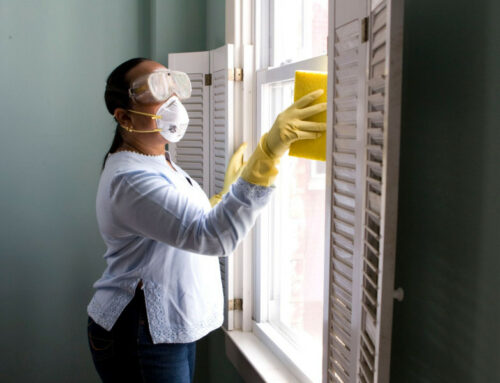Boilermakers, are you ready for the winter season this year on Purdue campus. It always pays to be prepared for anything, especially when it concerns health and safety. Winter is unlike any other season as heavy snowfall can paralyze West Lafayette and Lafayette roads. Therefore, it’s extremely important to prepare beforehand. In West Lafayette, winter lasts for four months, from November 23 to March 25 with the most snow falling around February. On average, it gets 19 inches of snow per year. On November 6 and 7, 1951, the worst snowstorm, with a 9.3-inch snowfall, was recorded in the history of West Lafayette.
Walking in Winter Weather
Understanding the risks of walking outdoors and taking precautionary measures can help reduce slips and falls, one of most common injuries during winter.
- Shoes and boots with non-slip rubber and neoprene soles are preferred over plastic and leather shoes for a better grip.
- Move slowly and pay full attention when walking on ice and slippery surfaces.
- Walk on designated walkways and avoid taking shortcuts on snow piles.
- Lean forward with your hands out of your pockets and extend your arms sideways to increase balance.
- When using the stairs, use handrails. If you have to carry a load, do not carry a heavy one as it can affect your sense of balance.
- If you find yourself slipping and falling backward, hit the floor with your palms and arms, head facing forwards, chin to chest. Try to avoid landing on your knees, wrists, or spine and relax your muscles when you fall.
Winter Clothing
Layering clothing in wintry weather is an important skill to protect yourself from cold air and freezing snow. As a rule of thumb, use three layers: the base layer to absorb the body’s moisture, the middle layer for insulation, and the outer layer as a barrier.
Base layer – Choose fabrics like synthetic fibers and silk so that moisture can evaporate freely off your skin.
Middle layer – Synthetic fleece, wool, cashmere, and goose down are excellent insulators, perfect for the middle layer.
Outer layer – A thick durable sweater or a windbreaker jacket is suitable for the outer most layer.
For bottoms, layer thicker tights or leggings with pants or jeans. Keep your feet warm in insulated shoes or winter boots, and don’t forget thermal gloves or gloves, scarves, hats, and earmuffs for extra insulation.
Getting Your Vehicle Ready for Winter
Your car needs to be as prepared for the winter as you are. This is to make sure your car is in its best running condition and that you are safe behind the wheel.
Although it’s normal to do an oil change only when it’s needed every 5000 miles or recommended by your manufacturer, it might be wise to change it a little sooner if it’s almost winter. More importantly, do not forget to check your car battery as subzero temperatures makes the oil more viscous and forces the motor to do more work to get the engine started.
Winter tires is also a no brainer to install. Consider investing in snow tires to improve grip on wet roads and prevent skidding. In addition, look at your owner’s manual for recommended winter tire pressure. Black ice has caused a number of accidents in the Greater Lafayette area – on Yeager and Northwestern roundabouts.
Another essential task is to remind yourself to keep the gas tank almost full if possible to prevent condensation. During the winter, any condensation droplets could freeze and block the flow of gas on the engine.
On the exterior of your car, things are much simpler. Take note of snow covering the windshield that may impairs visibility before driving off. To prevent packed snow or ice from forming during the night, utilize a windshield cover if sheltered parking is not available. Around Purdue many larger apartments offer the luxury of parking in a heated garage for an additional monthly fee. Regardless, definitely remember to have a de-icer spray, a pair of thick gloves, and a good ice scraper in the car boot at all times.
Getting Your Home Winter Ready
When preparing your home or apartment for the winter, procrastination is not an option. Here are some home preparation checklist for winter:
- Invest in cellular shades to keep the heat in and cold out. This will save you money on energy bills. You can also add another layer of insulation with plastic sheeting.
- Seal your doorways with foam weather stripping to prevent heat loss. Replace the screen door with a solid glass pane. Door drafts can be incredibly annoying.
- Turn off the exterior faucets and drain water from pipes and valves to prevent pipe bursts. If you do not have frost-proof faucets, turn off the shut-off valve inside your home.
- Change HVAC filters frequently to ensure the system is efficiently working.
- Inspect your chimney and fireplace for drafts. Make sure to clean the chimney from nests of birds and other small animals.
Purdue Emergency Alerts
- A wind chill emergency is declared when the existing or predicted low temperature and wind conditions pose health risks to students. Classes are suspended, but work operations shall continue. For those who can’t come to work, authorization from their supervisor for their absence is required.
- A snow or ice emergency is declared when severe snow impacts the roads and sidewalks making them impassable. Class and work are then suspended. However, essential workers are still required to report, unless travel is prohibited from the county where the personnel resides. The school may then require the personnel to stay in the school for them to provide the minimum level of service.
- Learn more about the Purdue Adverse Weather Procedures.





